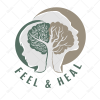Why You Overthink Everything (And How to Stop)
Overthink. Do you find your mind constantly spinning with analysis, rehearsing conversations before they happen, replaying interactions after they’ve occurred, or generating endless “what if” scenarios about the future? Perhaps you’ve noticed that this mental hyperactivity rarely leads to better solutions or peace of mind but instead creates exhaustion, anxiety, and a sense of being trapped in your own thoughts. If excessive thinking has become your default mode rather than a tool you use intentionally, you’re experiencing a specific pattern of cognitive hypervigilance that initially developed as protection but has likely become a source of suffering rather than security in your current life.
This overthinking pattern rarely develops randomly. It typically emerges through experiences where anticipating problems, analyzing situations intensely, or maintaining mental vigilance provided genuine protection or advantage. Perhaps you grew up in an unpredictable environment where constantly scanning for potential issues helped you navigate genuine threats or instability. Maybe you discovered that intellectual analysis earned you validation or security that wasn’t consistently available through other means. Or perhaps emotional expression felt dangerous or unwelcome, leading you to process experiences mentally rather than feeling them directly. These contexts create neural pathways that prioritize cognitive processing as the primary way of managing both internal and external experiences, eventually becoming an automatic rather than intentional response to life.
Your body holds this mental hyperactivity in specific ways. You might notice persistent tension in your forehead, temples, or jaw—physical manifestations of the constant mental effort. Your breathing likely becomes shallow and restricted, centered in your upper chest rather than your diaphragm, reflecting the activation associated with continuous thinking. You may experience a characteristic sense of living from the neck up—feeling connected to your head while relatively disconnected from the rest of your body. These physical patterns aren’t random but reflect how overthinking becomes embodied, creating somatic habits that maintain cognitive hypervigilance regardless of whether it’s currently necessary or helpful.
The most painful irony of overthinking lies in the gap between its promise and its actual impact. Mental analysis offers the compelling illusion of control, certainty, and preparation—suggesting that if you just think thoroughly enough, you can prevent problems, perfect your responses, or protect yourself from potential pain. The reality, however, often involves endless mental loops that generate anxiety rather than solutions, disconnect you from direct experience rather than enhancing it, and ultimately create the very suffering they’re attempting to prevent. This gap between what overthinking promises and what it delivers keeps the pattern in place despite its costs, as the illusory sense of control feels safer than the uncertainty of direct experience.
What makes this pattern particularly difficult to change is how our culture validates and even celebrates excessive thinking. We often praise analytical intelligence, equate constant mental activity with productivity, and frame overthinking as carefulness or conscientiousness rather than recognizing when it becomes counterproductive hypervigilance. This social reinforcement obscures the distinction between useful analysis and compulsive rumination, making it challenging to recognize when thinking has shifted from helpful tool to harmful pattern.
Healing Exercise #1: The Thinking Pattern Tracking Map
For one week, notice and document your overthinking patterns with specific attention to their characteristics and triggers. When does your mind begin spinning? What types of situations activate excessive analysis? What physical sensations accompany the overthinking? What are you attempting to accomplish or avoid through this mental activity? What happens when you try to stop the thinking
process? This detailed tracking helps identify your particular patterns and the specific functions overthinking serves in your life, bringing awareness to processes that often operate automatically outside conscious recognition.
Healing Exercise #2: The Embodied Presence Practice
Overthinking thrives when awareness remains exclusively in the head rather than the whole body. Interrupt this pattern through daily somatic practice: Set aside 10 minutes to intentionally shift from thinking to sensing. Place both feet firmly on the ground and systematically bring attention to physical sensations throughout your body—the pressure of your feet on the floor, the weight of your body against surfaces that support it, the movement of your breath, the temperature of the air on your skin. When your mind inevitably begins thinking again, gently return attention to pure sensation without judgment. This practice gradually rebuilds neural pathways for direct embodied experience as an alternative to constant mental processing.
Healing Exercise #3: The Thought Containment Experiment
Many overthinkers benefit from establishing clear boundaries around analytical thinking rather than attempting to eliminate it entirely. Try this structured approach: Set aside specific “thinking sessions” at designated times—perhaps 20 minutes in the morning and evening where you intentionally process current concerns, plan necessary activities, or reflect on important matters. During these sessions, write your thoughts rather than simply cycling through them mentally, creating external organization that helps contain the process. Then, during the remainder of your day, when overthinking begins, gently remind yourself: “This is my mind doing what it knows how to do. I don’t need to engage with these thoughts now. I’ll address them during my next thinking session.” This practice helps transform thinking from an unconscious habit into a conscious, bounded activity that serves you rather than consumes you.
Healing overthinking involves understanding the crucial difference between useful analysis and compulsive rumination. Thoughtful consideration of important matters serves valuable purposes when engaged intentionally, with clear purpose, and within appropriate boundaries. Problems arise when thinking becomes a reflexive response to all experience, continues long past its usefulness, or serves primarily to avoid direct emotional experience rather than enhance understanding. This important distinction helps transform your relationship with thinking from unconscious compulsion to intentional tool, allowing mental activity to serve your wellbeing rather than undermine it.
Your physical practices significantly impact healing from overthinking. Many chronic overthinkers maintain bodily patterns that reinforce cognitive dominance—perpetual tension in the head and jaw, shallow breathing centered in the upper chest, and disconnection from lower body sensations that would ground mental energy. Practices that invite different physical patterns—perhaps gentle movement that brings awareness to previously ignored body areas, breathing exercises that engage the diaphragm rather than the upper chest, or activities that require full sensory engagement rather than mental processing—help create somatic alternatives to embodied overthinking. As your body experiences different ways of being physically present, your cognitive patterns naturally begin to shift as well.
Relationships play a crucial role in this healing, as human connection provides powerful regulation for nervous systems caught in cognitive hypervigilance. Overthinkers often process experiences mentally rather than sharing them directly, creating a sense of isolation even in the presence of others. Practice bringing your authentic experience into relationship rather than just your conclusions about it, perhaps saying things like “I’m feeling anxious right now” rather than sharing your analysis of why you might be anxious or how to fix it. This direct sharing helps create social connections based on genuine experience rather than mental processing, providing external support for shifting from overthinking to more direct engagement with life.
Remember that healing overthinking happens gradually through consistent practice and self-compassion. Your analytical patterns likely developed for important protective purposes—helping you navigate genuinely challenging circumstances, earning validation when other routes weren’t available, or processing experiences that felt too overwhelming to engage with directly. Honoring the intelligence of these adaptations while gradually establishing more balanced patterns creates a more integrated relationship with your cognitive capacities—one that allows thinking to serve as a valuable resource you engage intentionally rather than a compulsive pattern that controls your experience regardless of its current usefulness.
Keywords: Overthink, polyvagal theory, gestalt therapy, psychotherapy, parents, parental trauma, somatic experiencing
Contact us: Feel and Heal Therapy Office










